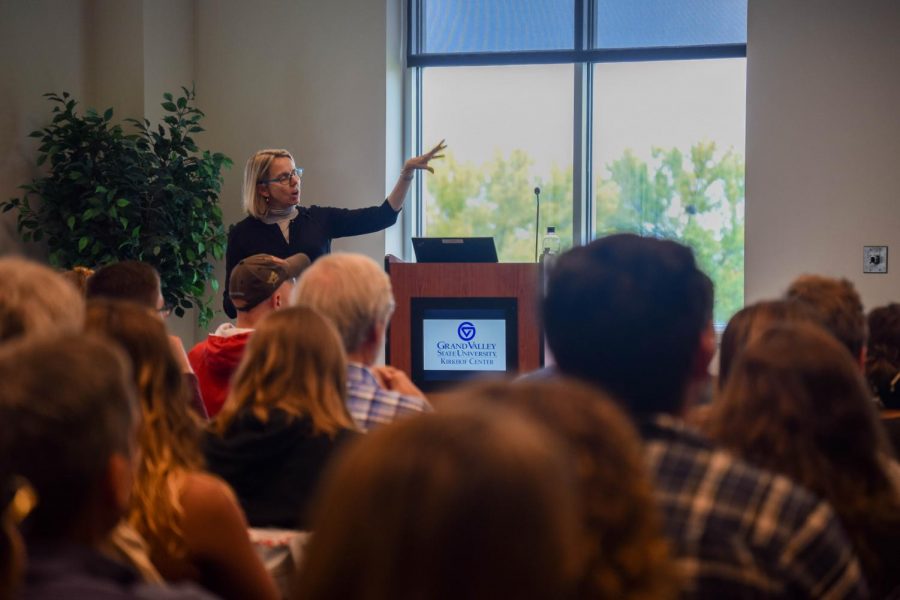Renowned chemist combines art and science in lecture series
Oct 14, 2019
Karen Trentelman’s work combines two seemingly unrelated fields, as her interest in art and archaeology as an undergraduate drove her to study the scientific examination of art, combining both of her passions.
Trentelman is a senior scientist in the Conservation Institute of the J. Paul Getty Trust in Los Angeles, California. She spoke at the DeVos Center’s Loosemore Auditorium Thursday, Oct. 10 on how scientific analysis can uncover the beauty of art pieces. On Oct. 11, she gave a chemistry seminar detailing the scientific examination of art in the Kirkhof Center’s Pere Marquette room.
Through humor and her wealth of knowledge, Trentelman discussed the four different sections of the J. Paul Getty Trust during her chemistry seminar. The Getty Museum exhibits the art for the public while the Getty Foundation is for grants. The Research Institute is a library archive of artists’ materials and texts, and the Conservation Institute is where scientists look at different aspects of art.
“This is part of our shared cultural heritage as human beings,” Trentelman said. “Whether its ancient Athenian pottery or a painting by Jackson Pollock, these are all the things that tell us about our culture, tells us about our society, and by bringing that forward we are able to preserve our history and our culture. It really is about the human experience.”
At her work in the Conservation Institute, art is again broken up into six sections for research. Trentelman works with artists’ materials and techniques to see how different pigments have changed or how artists techniques have varied over the decades.
Documentation answers basic questions about the pieces, analyzing what it is and what it is made of. Material properties ask how the materials have changed over time. The suitability of conservation treatment develops new techniques for preserving the art. Finally, environmental response decides how the art should be kept, stored and transported, calculating temperature and humidity.
In her work as a scientist, Trentelman communicates with a variety of departments and specialized people to keep the history in art alive and well. She works closely with conservators, who are trained in the treatment, preservation and repair in the art. She also works with the art historians, who acquire certain pieces and decide which exhibits to reveal. The art historians interpret the art and converse with Trentelman for answers to broad questions.
“The best projects we have are ones where all three of us are working together,” Trentelman said. “One of the things that was challenging for me was to learn how to talk to people who didn’t go through the same background that I did. We have to find a common language.”
Trentelman described the process of analyzing the art with both hands tied behind her back. There are four different kinds of analytical approach including elemental, molecular, microscopies and imaging techniques with a variety of tools when analyzing the history beneath each painting or ceramic.
One of Trentelman’s examples included her and a colleague’s analysis of 19th century black drawings using Raman microscopy to determine which kinds of carbon were used in different paintings. From a variety of paintings, each looking identical in their shaded gray illustrations, they concluded each piece was created using different materials. These included numerous pastels, conté crayon and charcoal, among others.
She also showed the three stage firing of ancient Athenian pottery, which revealed the chemistry of iron oxidation states. The pottery is painted in areas intended to be the color black with a refined slip, the pottery and gloss are oxidized to red, the iron is reduced from red to black and the refined slip is sintered in the reduction stage, while the porous body is oxidized to red iron and the glassy slip remains black in the reoxidation stage.
“I still get a thrill from seeing a new piece of art and being able to work on something,” Trentelman said. “To be in a very privileged position to see these things in a way that most people can’t; I feel like I can touch the past.”























